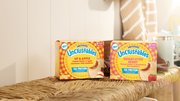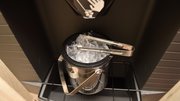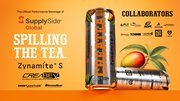Blog
Become The Coffee Expert Knowledge Is Key For Effective Salesmanship
May 14, 2015 | Len Rashkin
TAGS: Vending Times columnist, OCS salespeople, office coffee service, office coffee sales, OCS education, OCS customer service, coffee business, office refreshments, OCS sales training, Len Rashkin, OCS private label coffee, becoming a coffee expert |
This month I am going to be covering basic information about coffee, and incorporating product facts into your sales presentation. I believe that it is essential for all salespeople in our industry to have basic coffee knowledge, and to use the correct coffee terminology when we sell our coffees to our customers. This information could be an effective training tool at a sales meeting, so that your salespeople can use the correct terms when presenting to a potential client. If you and your sales team sound professional, sales closing rates will become higher. Prospects and customers want to deal with people they not only like, but also regard as professional and knowledgeable in their field.
When you are in front of a prospect, talk about "blends" and "straights," and discuss your private-label coffees in relation to these descriptions. A blend is a mix of two or more types of coffee. It could be a blend of Colombian and Central American, Guatemalan and Ethiopian, Mexican, Vietnamese and Indonesian, and so on and on.
Straights are from one country, and also are referred to as "single origin" A straight can be a blend of different coffees from several growing regions in one country. If you are talking about "100% Colombian" or other coffees that are stated as "100%" coffee from one country, it is considered straight/single origin coffee. I feel that one of the most misleading descriptions on coffee packaging is, for example, the wording "100% Colombian Blend" or "100% Kona Blend." There is no packaging law to protect the consumer by requiring that in order to describe coffee as "100% Xxx blend," the purveyor must use a high percentage of Xxx coffee in that blend. It could actually be less than 10% Colombian or Kona coffee in a mix of other blended coffees.
The two types of coffee in the world are arabica and robusta coffees. Arabica coffees are considered to be a higher grade than the cheaper robusta beans. There are stark differences between the two. Arabica is grown at higher elevations in rich soil, with proper rainfall throughout the growing season. There is usually good cloud cover protecting the coffee trees from continual direct sunshine. Arabica beans have a smooth taste, with no bitterness. Caffeine levels are about half the amount found in robusta coffee. Arabica is more susceptible to coffee diseases (the rust or roya fungus, for example). More care is needed to bring the coffee to market, reflecting higher cost of fertilization, etc., than robusta. Brazil is the largest producer of arabica coffee; Colombia is the second-largest grower.
Robusta are hardy beans resistant to coffee diseases. The caffeine levels are twice those of arabica beans. Robusta has low acidity and high bitterness. It is used primarily in instant coffee and espresso, and as a filler in inexpensive ground-coffee blends. This coffee is much less expensive to produce and yields more coffee per tree. Vietnam is the largest producer of robusta coffee.
Better Coffee Costs More
Many OCS private-label coffees are comprised of 100% Colombian coffee. It is grown at high altitudes in near-perfect weather conditions and soil to produce a very well-balanced and smooth cup of coffee. The Colombian Coffee Federation, using its international logo of Juan Valdez on all packaging, guarantees that the coffee in the package is grown and harvested using the best fertilization methods. Thousands of small farmers sell their coffee through co-ops that the Federation has approved. Colombian coffee is considered to be an outstanding mild coffee with clean taste, medium to high acidity and body, as well as a pronounced and complete aroma. It is a balanced coffee with a sensory profile of excellent quality, according to coffee aficionados.
Looking at the above, if your competition does not have the Colombian Federation logo on the package, but it states 100% Colombian, chances are that the coffee is not held to the strict regulations of the federation. The cost of that Colombian coffee is less to the operator and may not be of the same quality as Colombian Federation-sanctioned coffee.This could be used to gain a competitive advantage when presenting to a prospect.
Specialty coffee is the designation of the highest-quality coffees. Do not confuse the term "gourmet" coffee with specialty coffee. Gourmet coffee is a term used by the ad agencies to market any type of coffee. Coffee considered "specialty" represents less than 10% of all the arabica coffee grown. These beans are grown under near-perfect conditions and are picked by hand at the moment of ripeness. Not all the beans are picked from the tree at the same time, since not all of the beans are perfectly ripe at the same time. Pickers have to go back to the trees several times, and this is more costly to the growers. When two or more specialty coffees are blended, usually the beans from each country are roasted separately, due to the different sizes of each bean. Smaller beans will roast faster than larger ones. Blending takes place after each size has been roasted. Again, use this information to explain why your specialty coffees are more costly and why the taste is superior to the average straights or blends.
Roasting coffee is an art, and if the roaster misjudges the roasting time and temperature, a whole batch of coffee can be ruined. During the roasting process, "shrinkage" takes place. This happens when coffee becomes darker, as more time is needed to roast at high temperatures. Coffee beans will lose from 14% to 24% of their moisture content when they're heated. Now you can see that the cost of producing darker beans is higher because of the loss of bean weight, higher labor expense and the added cost of fuel. An interesting note is that the darkest-roasted coffees (French or Italian varieties, in particular) actually have less caffeine, since the caffeine is burnt off.
The above information is just scratching the surface of coffee knowledge, but you now have enough information to present coffee to the decision-maker and sound professional.
Please let me know how you have used coffee information in your training and presentations. I can be reached at (516) 241-4883 or OCSconsultant@aol.com.
LEN RASHKIN is a pioneer in office coffee service. He founded Coffee Sip in 1968 and later merged it with Dell Coffee, of which he became president in 1991. Sales at Dell topped $7 million. He also founded the Eastern Coffee Service Association and National Beverage & Products Association. He is a speaker at national and local trade conferences, consults on OCS sales and marketing, and is the author of two OCS training programs.







